|
|
The Model T was probably one of the
most versatile cars of it's time.
When the Model T was designed and introduced, the
infrastructure of the world was quite different from
today's. Pavement was a rarity except for sidewalks and
a few big-city streets. (The sense of the term
"pavement" as equivalent with "sidewalk" comes from that
era, when streets and roads were generally dirt (mud
during rainy periods) and sidewalks were a paved way to
walk down them without getting dirty. In fact, this was
a motive for segregating foot traffic from carriage
traffic long before the speed of automobiles provided
another motive.) Agriculture was the occupation of many
people. Power tools were scarce outside factories, as
were any power sources to run them; electrification,
like pavement, was found usually only in larger towns
and cities. Rural electrification and motorized
mechanization were embryonic in North America and
Europe, and nonexistent elsewhere.
Henry Ford oversaw the requirements and design of the
Model T based on the realities of that world.
Consequently, the Model T was (intentionally) almost as
much a tractor and stationary engine as it was an
automobile, that is, a vehicle dedicated solely to road
use. It has always been well regarded for its
all-terrain abilities and ruggedness. It could travel a
rocky, muddy farm lane, ford a shallow stream, climb a
steep hill, and be parked on the other side to have one
of its wheels removed and a pulley fastened to the hub
for a flat belt to drive a bucksaw, thresher, silo
blower, conveyor for filling corn cribs or haylofts,
baler, water pump (for wells, mines, or swampy farm
fields), electrical generator, and countless other
applications. One unique application of the Model T was
shown in the October 1922 issue of Fordson Farmer
magazine. It showed a minister who had transformed his
Model T in to a mobile church, complete with small
organ.
During this era, entire automobiles (including
thousands of Model Ts) were even hacked apart by their
industrious owners and reconfigured into custom
machinery permanently dedicated to a purpose, such as
homemade tractors, ice saws, or many others. Dozens of
aftermarket companies sold prefab kits to facilitate the
T's conversion from car to tractor. In a world mostly
without mechanized cultivators, Model Ts filled a
vacuum. Row-crop tractors such as the Farmall did not
become widespread until the 1930s. Like many popular car
engines of the era, the Model T engine was also used on
home-built aircraft (such as the Pietenpol Sky Scout)
and motorboats.
Also, many Model Ts were converted into vehicles
which could travel across heavy snows with kits on the
rear wheels and skis where the front wheels were
located. They were popular for rural mail delivery for a
time. The common name for these conversions of cars and
small trucks was Snowflyers. These vehicles were
extremely popular in the northern reaches of Canada
where factories were set up to produce them.
When Henry Ford started to
manufacture his groundbreaking Model T on Sept. 27,
1908, he probably never imagined that the spindly little
car would remain in production for 19 years. Nor could
Ford have foreseen that his company would eventually
build more than 15 million Tin Lizzies, making him a
billionaire while putting the world on wheels.
But nearly as
significant as the Model T?s ubiquity was its knack for performing tasks far
beyond basic transportation. As quickly as customers left the dealers? lot, they
began transforming their Ts to suit their specialized needs, assisted by scores
of new companies that sprang up to cater exclusively to the world?s most popular
car.
Following the Model T?s skyrocketing success came mail-order catalogs and
magazine advertisements filled with parts and kits to turn the humble Fords into
farm tractors, mobile sawmills, snowmobiles, racy roadsters and even
semi-trucks. Indeed, historians credit the Model T ? which Ford first advertised
as The Universal Car ? with launching today?s multibillion-dollar automotive
aftermarket industry.
|
Some uses for the Model T...
|
Click an image to enlarge
|
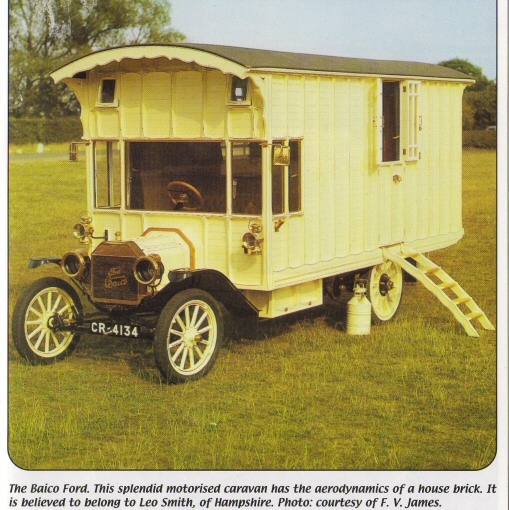 |
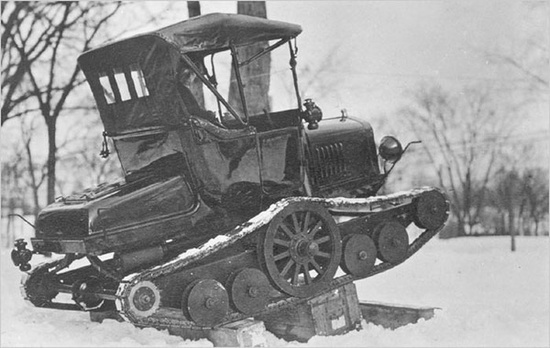 |
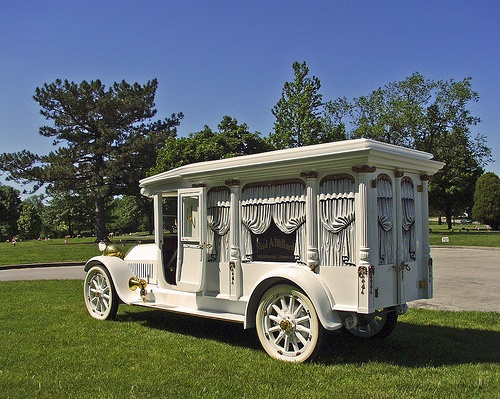 |
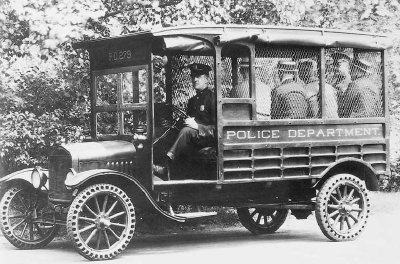 |
|
Model T
Camper |
Model T
"Tank" |
Model T
Hearse |
Model T
Paddy-Wagon |
|
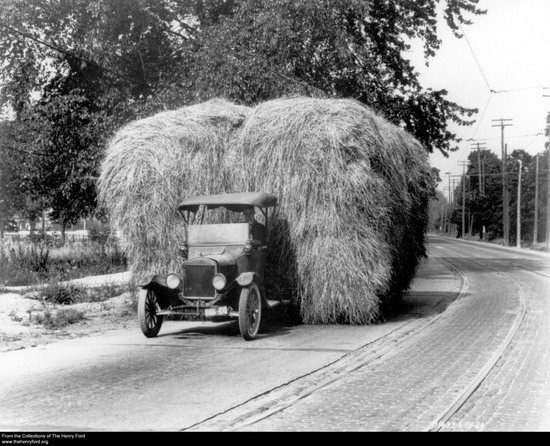 |
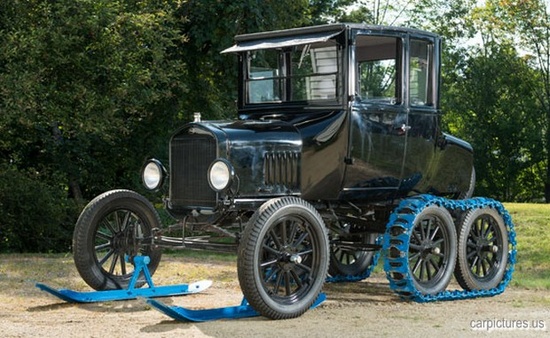 |
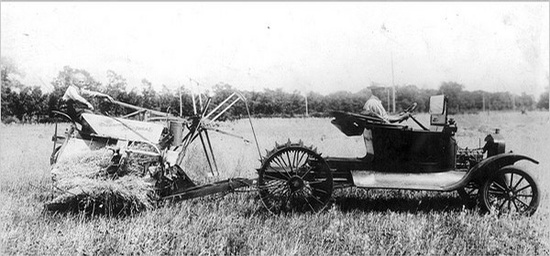 |
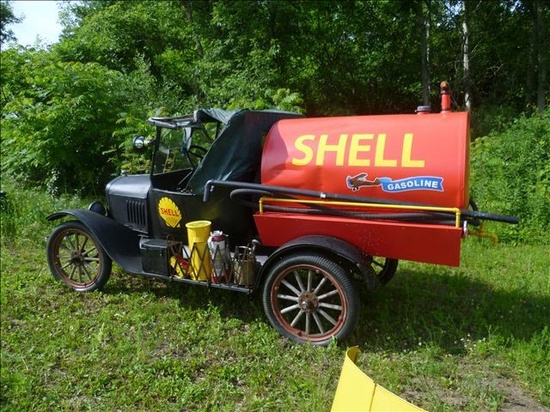 |
|
Overloaded
Model T |
Model T
Snowmobile |
Model T
Tractor |
Model T
Fuel Tanker |
|
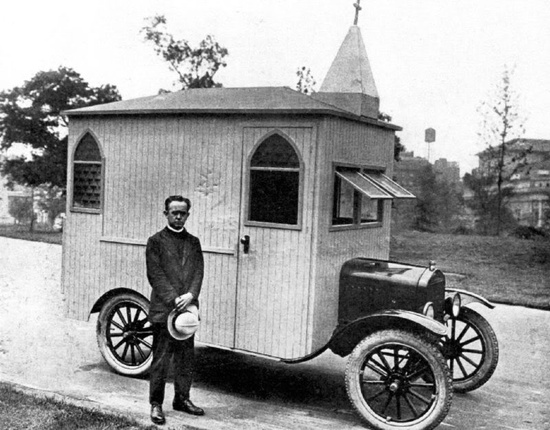 |
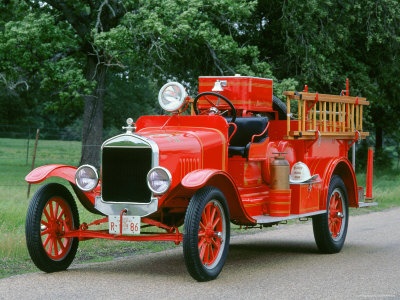 |
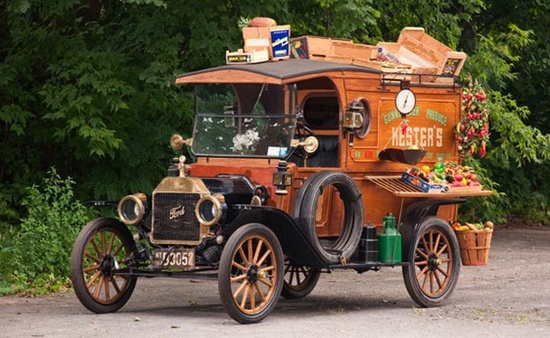 |
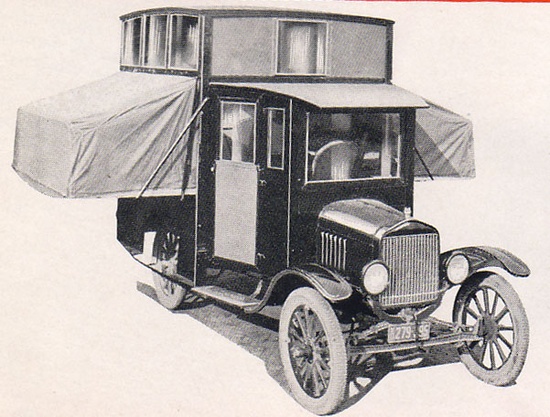 |
|
Model T
Church |
Model T
Fire Truck |
Model T
Vegetable Truck |
Model T
Camper |
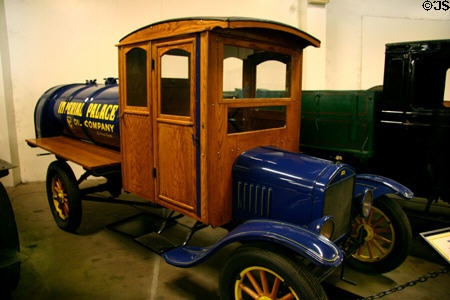 |
 |
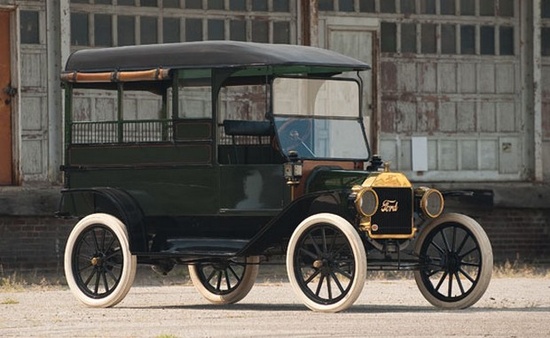 |
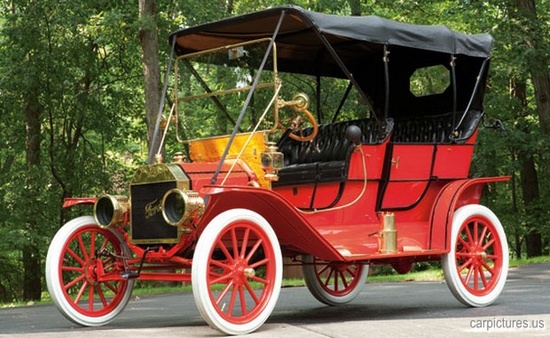 |
| Model T Water
Tanker |
Model T
Calliope Truck |
Model T Mail Truck |
Model T
Touring Car |
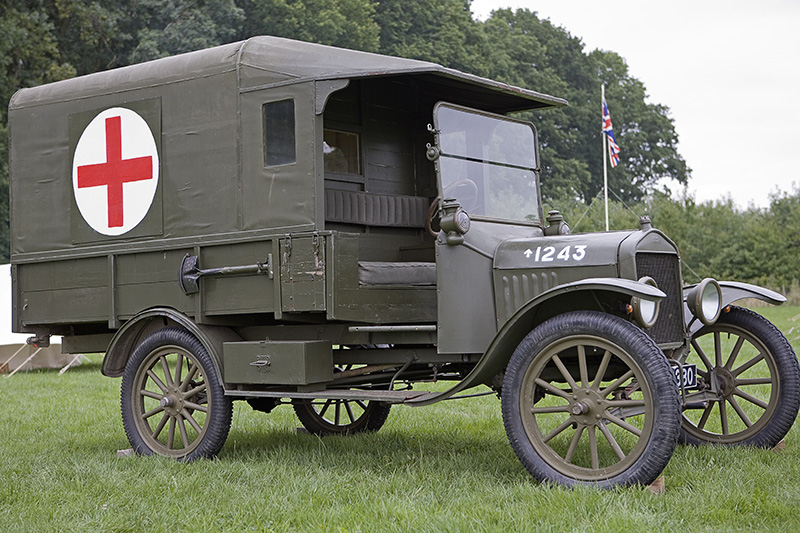 |
 |
 |
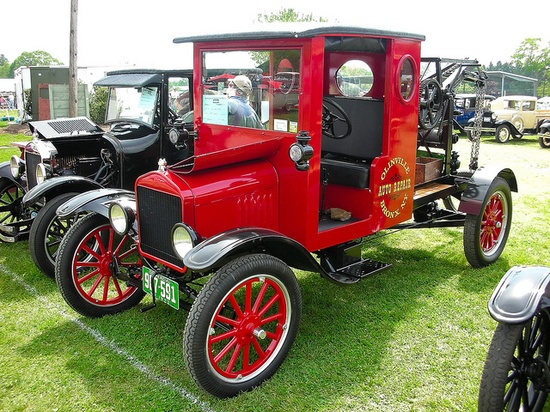 |
|
Model T
Ambulance |
Model T Limousine |
Model T Beach
Buggy |
Model T
Tow Truck |
Do-it-yourself
magazines ran story after story describing how to modify the T. But some of the
most clever and practical conversions came from owners? sheer ingenuity, with a
bit of carpentry and mechanical skill. One Midwestern travelling minister built
a tiny church atop his car. He installed a pint-size organ inside and designed
the steeple to fold down so the road-going chapel could be garaged.
And the Model T worked on the railroad. Their original wood-spoke wheels
replaced with heavy flanged-steel railcar wheels, the Fords served as
track-inspection cars and even railyard switcher engines.
No duty was too mundane or extreme for the wildly popular T, which became known
by the nickname Flivver. By jacking up the rear and replacing one wheel with a
pulley and leather drive belt, owners could turn the Ford into a fine stationary
power plant for milling grain or turning the saw blade of a mobile lumber mill.
Even years after its heyday, the T continued as the Swiss Army knife of
automobiles. In the 1930s, a group of New England ski enthusiasts created the
first tow rope on the slopes of Woodstock, Vt. Their initial power source was a
well-worn T equipped with a Pullford tractor conversion, its huge steel
drive wheels turning at just the right speed to reel skiers up the mountain.
Even when the original bodies and frames had rusted away, T owners would swap
out the nearly unbreakable Ford engines and drive axles to power boats, oil
derricks and stationary pumps.
The car?s do-it-all utility sprang from a combination of stout basic design and
widespread availability, said Robert Casey, curator of transportation at The
Henry Ford museum and Greenfield Village in Dearborn, Michigan, and author of
?The Model T: A Centennial History? (Johns Hopkins University Press, 2008).
First, there were simply more of them than anything else, and the T was cheaper
than just about every other car once Ford got production really rolling. By the
mid-1920s, Ford?s mass-production juggernaut at its Highland Park factory near
Detroit had reduced the price of a new two-seat Runabout to $240.
Those looking to convert their Fords for uses beyond transportation found the
T?s 4-cylinder engine a willing accomplice. Although it produced just 20
horsepower, the rugged 2.9-liter unit didn?t have a lot of weight to haul
around. The basic car tipped the scales at about 1,300 pounds, giving it peppy
performance.
The engine was torquey, which made it work pretty well on the farm.
Indeed, the T often served as a mechanical beast of burden. The car moved
capably in tilled soil because Henry Ford and his draftsmen had designed its
wagonlike 30 x 3 1/2 inch wheels, high ground clearance and flexible suspension
for traversing the rutted dirt roads of rural America.
But
in competing with horses and mules pulling heavy disc harrows and grain
threshers, the Ford quickly showed its limitations, spurring inventors and
entrepreneurs to step in with tractor conversion kits. In his 2004 book, ?Ford
Farm Tractors,? Randy Leffingwell noted about 125 manufacturers offering tractor
conversion kits for the Model T in 1914-30.
Well-known names included American-Ford-A-Tractor, the Adapt-O-Tractor and the
Smith Form-A-Tractor (which also made chain-drive kits to turn Model Ts into
semi-trucks for road use). Sears & Roebuck and other retailers sold hundreds of
kits. ?Make your Ford do the work of two or three horses!? shouted ad copy for
Pullford?s $135 kit, sold by Montgomery Ward.
One of the most successful makers, the E. G. Staude Manufacturing Company of St.
Paul, Minn., produced nearly 30,000 of its Mak-A-Tractor kits for Ford cars. The
$225 kit included two large-diameter cleated wheels and different gearing to
boost the car?s lugging power (and reduced top speed to 2.5 miles an hour).
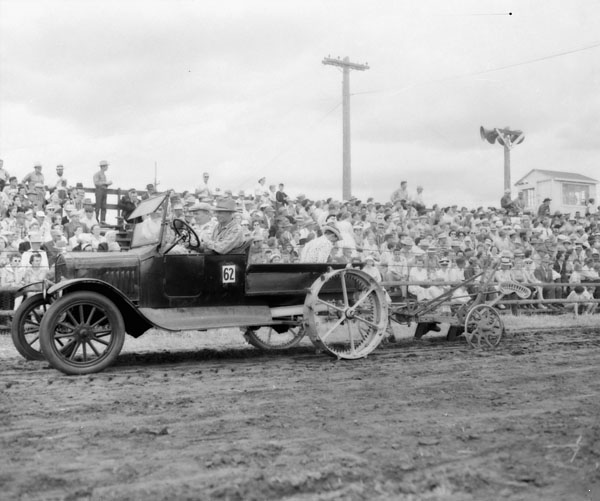 Nearly as prolific as the tractor kits were speedster bodies, designed to make
the humble Ford look like a Grand Prix car or dirt-track racer. The two-seat
speedster body kits were made by at least a dozen specialist companies,
including F. M. Ames, Bub and Paco. Stripping off the standard Ford sheet metal
and installing a lightweight speedster body further improved the T?s
power-to-weight ratio and made performance brisk. Nearly as prolific as the tractor kits were speedster bodies, designed to make
the humble Ford look like a Grand Prix car or dirt-track racer. The two-seat
speedster body kits were made by at least a dozen specialist companies,
including F. M. Ames, Bub and Paco. Stripping off the standard Ford sheet metal
and installing a lightweight speedster body further improved the T?s
power-to-weight ratio and made performance brisk.
There haven?t been many automobiles, or even machines in general, which can be
made into a race car and a tractor.
Today, no single vehicle has to serve as many purposes as the milestone Model T.
Perhaps a mini-van comes closest to being the do-it-all device, but it would be
ill-suited to pulling a disc harrow over a freshly plowed field.
|

